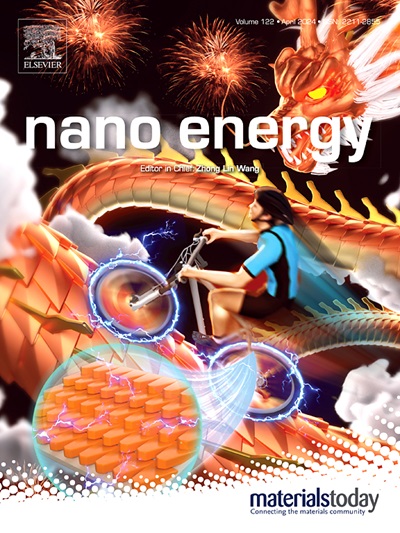Osmotic energy-based systems for self-powered sensing
IF 16.8
1区 材料科学
Q1 CHEMISTRY, PHYSICAL
引用次数: 0
Abstract
Converting osmotic energy into electric energy through ion transport process has various advantages, including no CO2 emissions and minimal daily variability. Thus, it can be a promising strategy to build self-powered sensors. Specifically, there are mainly two approaches to construct osmotic energy-based self-powered sensors. One is harvesting osmotic energy as power supplies for existing sensors. The other is directly establishing active self-powered sensors. Both of the two approaches have developed rapidly in recent years. In this review, recent publications about osmotic energy conversion systems for self-powered sensors are presented. Firstly, the related history and mechanism are systematically summarized. Then, the recent progress of relevant power supplies and active sensors in recent 8 years are successively introduced. Considering nanopore/nanochannel-based selective membrane as one of the key units of ion transport-based energy conversion systems, the introduction is made around different kinds of selective membranes, including symmetric membranes with single-channel/pore, porous structures built by plenty of nanochannels/nanopores, and Janus membranes with asymmetric pore structures. Finally, future challenges of osmotic energy conversion systems for self-powered sensors are listed and analyzed. We believe this review could provide valuable guidance for relevant researchers to promote osmotic energy conversion technology and self-powered sensors to a broader range of applications.

基于渗透能量的自供电传感系统
通过离子传输过程将渗透能转化为电能具有多种优势,包括无二氧化碳排放和日变化最小。因此,这可能是构建自供电传感器的一种有前途的策略。具体来说,构建基于渗透能的自供电传感器主要有两种方法。一种是收集渗透能作为现有传感器的电源。另一种是直接建立主动式自供电传感器。近年来,这两种方法都得到了快速发展。在这篇综述中,介绍了近期有关自供电传感器渗透能转换系统的出版物。首先,系统地总结了相关的历史和机制。然后,陆续介绍了近 8 年来相关电源和有源传感器的最新进展。考虑到基于纳米孔/纳米通道的选择性膜是基于离子传输的能量转换系统的关键单元之一,围绕不同类型的选择性膜进行了介绍,包括单通道/孔对称膜、由大量纳米通道/纳米孔构建的多孔结构以及非对称孔结构的 Janus 膜。最后,我们列举并分析了自供电传感器渗透能量转换系统未来面临的挑战。我们相信这篇综述能为相关研究人员提供有价值的指导,以推动渗透能转换技术和自供电传感器的更广泛应用。
本文章由计算机程序翻译,如有差异,请以英文原文为准。
求助全文
约1分钟内获得全文
求助全文
来源期刊

Nano Energy
CHEMISTRY, PHYSICAL-NANOSCIENCE & NANOTECHNOLOGY
CiteScore
30.30
自引率
7.40%
发文量
1207
审稿时长
23 days
期刊介绍:
Nano Energy is a multidisciplinary, rapid-publication forum of original peer-reviewed contributions on the science and engineering of nanomaterials and nanodevices used in all forms of energy harvesting, conversion, storage, utilization and policy. Through its mixture of articles, reviews, communications, research news, and information on key developments, Nano Energy provides a comprehensive coverage of this exciting and dynamic field which joins nanoscience and nanotechnology with energy science. The journal is relevant to all those who are interested in nanomaterials solutions to the energy problem.
Nano Energy publishes original experimental and theoretical research on all aspects of energy-related research which utilizes nanomaterials and nanotechnology. Manuscripts of four types are considered: review articles which inform readers of the latest research and advances in energy science; rapid communications which feature exciting research breakthroughs in the field; full-length articles which report comprehensive research developments; and news and opinions which comment on topical issues or express views on the developments in related fields.
 求助内容:
求助内容: 应助结果提醒方式:
应助结果提醒方式:


